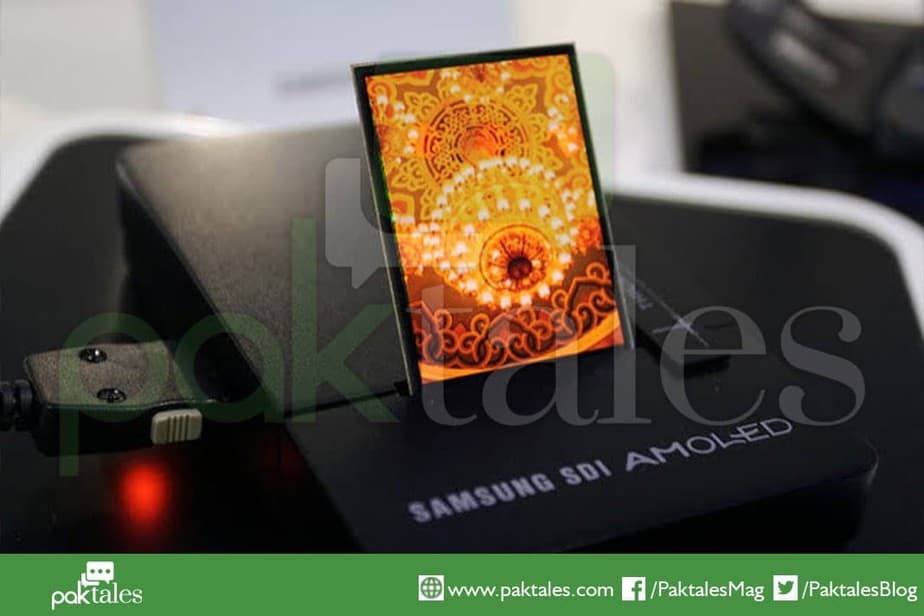AMOLED Vs OLED – What’s Your Choice? And Why?

Smartphones have been gradually transformed since the arrival of the first phone in 1975. Interestingly, people never used the term “Smartphone” until 1995. Due to competition in this advanced field of Technology, innovations have become a tool to achieve excellence in the future. Nowadays, people prioritize phones with OLED or AMOLED displays before spending money. These are two kinds of display technologies of great interest to smartphone users. This article will differentiate between Super AMOLED vs OLED mobile phones and help you to choose a cell phone OLED screen or AMOLED.
Moreover, we are now part of the generation for whom smartphones have become a necessity, not just a luxury. Gone are the times when we bought phones for just making a call and sending messages to our loved ones.

People prefer technology over anything and make sure that their mobile device contains enough space, the best design, the perfect megapixel camera, and much more. So, let’s have a look at what is the difference between OLED and AMOLED smartphone displays.

Super AMOLED VS OLED- What’s your choice?
Before choosing between these two display technologies, let’s discuss their properties and differences.
OLED Displays:
OLED stands for the Organic Light Emitting Diode, which comprises LED made up of organic material. The moment current enters through the film of organic compounds, it emits light. In the (Organic Light Emitting Diode) displays, the organic layer is present in between the two electrodes, out of which one is transparent.
Although (Organic Light Emitting Diode) works the same way as conventional diodes and LEDs, it also uses a thin film instead of semiconductors to produce dynamic and vibrant colors.
However, unlike many other Light-emitting diode, OLED displays are thin, flexible, and so small that you can see them as individual pixels. So, when OLED displays are used, images are an exception. Moreover, these displays not only come up with perfect-quality pictures but also consume less power when they deliver deep dark colors.
Advantages of OLED Display:
Let’s unveil several unique features of this Display.
- Its displays contain less thin, lighter, and more flexible organic layers.
- They are used for the formation of digital displays.
- Light-emitting layers make them lighter, thinner, and less rigid.
- You will find it much brighter in comparison to a Light-emitting diode tv.
- Displays are relatively easier to prepare.
- Moreover, these displays can be designed in large sizes to produce high-quality pictures with a proper color- ratio.
- The large fields of it cover around 170-degree areas.
Disadvantages of OLED displays:
Although this kind of display has been regularly used in several devices, there are also some disadvantages to this display.
- It is the shorter version of display technology compared to other displays like standard LEDs.
- Moreover, it also contains a variation in color balance.
- The worst thing about these displays is that they are not water-resistant. So, they may get damaged easily when they come in contact with liquid.
Usage of OLED displays:
Several technology areas use OLED displays. Some of them are as follows:
- It is most commonly used in television displays.
- On the other hand, cell phone OLED screen development is used in smartphones as well. OLED mobile phones display or Cell phones; several companies like Apple, LG, Xiaomi, Huawei, Oppo, Vivo, Lenovo, Motorola, and others have adopted to this Screen technology.
- It is also used in the implementation of the computer monitor screen.
- Moreover, Organic Light-Emitting Diodes OLEDs are also used to make transparent lightning, wallpapers, and flexible light.
- Other digital display devices include handheld game consoles, portable systems, and Personal Digital Assistants PDAs or handheld PCs.

What is the Difference Between OLED and LCD?
Unlike Liquid Crystal Display LCD, Organic Light-Emitting Diodes OLEDs work without the backlight. The reason behind this fact is that OLEDs emit a visible form of light. Moreover, OLED also displays a deep black level. The black level is a kind of brightness level where the screen emits no light, and a pure black screen is produced.
OLED displays are lighter and thin when compared to Liquid Crystal Display LCD. Another exciting thing about the OLED screen is that it produces a high ratio in dark or low-light conditions.
Even if LCD uses a cold cathode in fluorescent lamps or a light-emitting diode LED backlight, OLED screen holds high contrast ratio displays.
AMOLED Displays: What is AMOLED
AMOLED is a term used for Active Matrix Organic Light Emitting Diode displays. Technically, AMOLED is an OLED kind of diode with an extra semiconductor film layer. AMOLED control uses a thin film transistor TFT backplane technology. This film controls the current flow, which is how it activates each pixel quickly.
Thus, when current passes through two thin-film transmitters, a high level of control exerts over each pixel. In return, this technology increases the viewing experience exceptionally. The function of the one film is to start and stop the storage capacitors. The other one facilitates the charging of the capacitors.

AMOLED vs OLED vs LED
The size of the AMOLED display has no such limitation compared to OLED and LED displays. The power consumption of AMOLED displays is also lesser than the other display technologies.
Due to unbelievable efficiency and performance, many mobile phones and other device manufacturing companies have incorporated this technology. Furthermore, you will also find AMOLED displays thinner and lighter than other display technologies like LCD and LED.
Difference between AMOLED and OLED?
AMOLED display technologies have now been frequently used in smartphones. On the other hand, Super- AMOLED is a kind of AMOLED display with an integrated touch function. In this display technology, the touch layer is integrated into the screen instead of on the top of the screen. Hence, compared to simple OLED, Super -AMOLED, which is SAMOLED, reflects one-fifth of sunlight.
Devices use Super AMOLED
Due to their impressive display quality, AMOLED display technologies are used in portable devices. The flexible screen and high display quality make it a complete package for a number of devices, such as;
- Mobile phones
- Televisions
- Laptops
- Smartwatches
- Portable music players
- Gaming consoles
- Digital cameras
- Music production hardware
Advantages of AMOLED
This display technology is getting popular due to its number of advantages.
- Compared to OLED devices, the AMOLED display is far embedded into any display screen size.
- Moreover, Active-matrix OLED technology has a higher rate of refresh when compared with the Passive matrix OLED.
- Active matrix OLED has also become the industry’s most frequently used display technology.
- You will find better viewing dynamic angles than In-Plane Switching Liquid Crystal Display IPS LCD.
Disadvantages of AMOLED
Despite the many advantages and popularity of AMOLED displays, this technology also has a few limitations.
- The major flaw of this highly efficient AMOLED display is that it eventually degrades in a short span of time. It may lead to a color shift or fade in the colors of the screen.
- With the passage of time, AMOLED devices may result in image retention or image persistence. Although this effect is temporary, it is hard to figure out even if you inspect it closely.
- If the image retention continues like in Plasma, it may result in a screen burn-in or ghost image. AMOLED does not use a uniform distribution of pixels when it suffers from a severe image burn-in. Therefore, it may result in a discoloration of certain areas of the electronic display device like CRT, computer monitor, or television display.
- Furthermore, when you compare Super- AMOLED vs OLED, the Active Matrix OLED is a more expensive display expertise.

SUPER AMOLED vs OLED
On a lighter note, we find several differences if we compare OLED and AMOLED based on their display size, contrast ratio, working, and display. Since smartphones evolved, they have come a long way from just a conventional type of LCD to an advanced level of AMOLED panels.
Display and Working
OLED displays deliver a deep black, while AMOLED thin film carries an exceptional quality picture. On the other hand, OLED works through a passage of current from a sandwich of organic layers igniting the electroluminescent layer to produce electricity.
The organic compound is present between the glass or plastic layers. Whereas, unlike simple OLED, Active-matrix OLED comprises additional TFTs to help reach the current to each pixel.
Contrast Ratio
Then comes a contrast ratio of OLED display, which is due to the ability of the light emitted to switch off completely. Thus, deep black shade is produced in OLED displays like in cellphone OLED display screens.
On the other hand, in AMOLED displays, each screen pixel emits light which eventually results in deeper blacks and bright colors. Unfortunately, these deeper blacks and deeper brightness cannot be seen clearly in direct sunlight.
Display Size
If we talk about the size, then AMOLED supports comparatively larger display sizes. While (Organic Light- Emitting Diode) is thinner than the standard form of LCDs and gives an efficient display for its pixels illuminates itself.

Super AMOLED Vs OLED Mobile Phones Technology
During the last couple of years, there has been a high demand for (Organic Light- Emitting Diode) display technology in smartphones. Most vendors are shipping smartphones with Super -AMOLED displays, considered an advanced version of cell phone OLED screen. According to research, around 500 million AMOLED screens were produced in 2018.

Moreover, in 2018 Samsung prevailed in the market with AMOLED display technology due to its highest end-user demand. Apple, Xiaomi, LG, Huawei, and other smartphone manufacturers have integrated AMOLED display technology. Now, Samsung has started manufacturing its Super -AMOLED brand as an (Organic Light- Emitting Diode) mobile phone display.
Most smartphone manufacturing companies like Apple, Samsung, LG, and others have been producing mobile phones with (Organic Light- Emitting Diode) displays. Apart from the variation in the display screens, the mobile phone world has evolved dynamically.
Whether you talk about innovation or versatile technology, smartphones have been experiencing frequent changes in size, display, features, shape, etc.
This fast pace of innovation in the smartphone world has increased competition among technology companies. Hence, mobile phones have evolved from pixelated versions of Nokia phones to highly advanced versions of iPhones. And later, the innovation moved towards the highly sophisticated and latest version of Super AMOLED display smartphones.
Moreover, the most influential factor concerning the Super- AMOLED display technology is that they automatically adjust to the lighting setting. Hence, Super AMOLED displays provide your eyes with high-quality graphics when we use multimedia and play our favorite games.
Phones with AMOLED Display – AMOLED Display phones
AMOLED display technology uses Nokia N85, whereas Nokia N9, Samsung Galaxy S, and Samsung Galaxy S4 Mini use a Super AMOLED display. There are more upgraded versions of SAMOLED, like Super AMOLED Plus for Samsung Galaxy S II and Super AMOLED Advanced for Motorola Droid RAZR. Samsung Galaxy J7, J5, J3, E5, S3, and Samsung Note 2 use the HD Super AMOLED display. Other mobile phone versions use Full HD, HD Plus Super AMOLED, and Super Retina HD.

Phones with OLED Display
On the other hand, the Samsung Galaxy S9, Samsung Galaxy S9+, Samsung Galaxy Note 9, iPhone XS, and the latest Vivo X9s use cell phone OLED screen displays.
Frequently Asked Questions
Is AMOLED or OLED better?
The smartphone user has one thing in mind regarding Display, i.e., AMOLED vs. OLED; which one is better? Regarding screen display, AMOLED is better than (Organic Light Emitting Diode) due to an extra TFT layer which makes it more flexible.
What is the Difference between AMOLED and OLED Displays?
The basics of AMOLED and OLED are the same: both displays use organic light-emitting material. When TFT is added at the back panel of OLED to control every pixel with current, it is called AMOLED.
What Phones have OLED Displays?
OLED is the latest technology, but many phones already have OLED displays. Some of the smartphone with OLED Display is as follow:
- iPhone XS
- Samsung Galaxy S9
- Samsung Galaxy Note 9
- Oneplus 6T
- LG V30
- Huawei Mate 20 Pro
- Vivo X9s
Which is the Best Display technology for Mobile phones?
OLED is currently the best Display for mobile phones, and the Super AMOLED display by Samsung is the best one around the globe. Many other companies like Huawei and LG are producing high-quality OLED displays. Let’s see how this cell phone OLED screen shapes up in the future.
Is AMOLED Bad for the Eyes?
AMOLED is currently the latest technology for Display, providing a brighter view than any other display; therefore, it hurts your eyes as the price for more is always heavier than the earlier technologies.
Which is Better full HD or Amoled?
It is irrelevant as full HD means 720p, whereas AMOLED is the technology where every pixel lights up with current; however, AMOLED is much better than full HD.
Why are IPS Better than AMOLED?
IPS provides sharper edges and angles than AMOLED display which makes it better than AMOLED when considering overall image quality with brightness.
Why is LCD Better than AMOLED?
In AMOLED display, every pixel has its light which makes colors more vibrant. In contrast, LSD has a backlight to display the pixel, which makes the color cleaner and whiter than the AMOLED display.
Which Display is Best for the Eyes?
OLED is the most suitable Display for eyes as it has a higher PPI than any other display.
Are IPS Displays Good for the Eyes?
The IPS display could be better for the eyes than many other displays.
Is OLED Good for the Eyes?
The OLED display is not suitable for your eyes as it brings blue light in excess, which causes many problems.
Conclusion:
Several similarities and dissimilarities of Super AMOLED vs. OLED mobile phones are mentioned in the article. So, considering the above discussion of LCD, OLED, AMOLED, and LED, AMOLED is the better version of OLED. And there is no point in raising a question that is better out of devices like cell phone OLED screens or AMOLED displays.
We hope all the above information will help you decide the difference between the two display technologies. However, depending upon the disadvantages and advantages mentioned in the article, you can choose anyone out of super AMOLED vs. OLED technologies. In short, due to the regular integration of innovative technologies in the field of telecommunication, smartphones have evolved from simple OLED and AMOLED to SMOLED displays.



